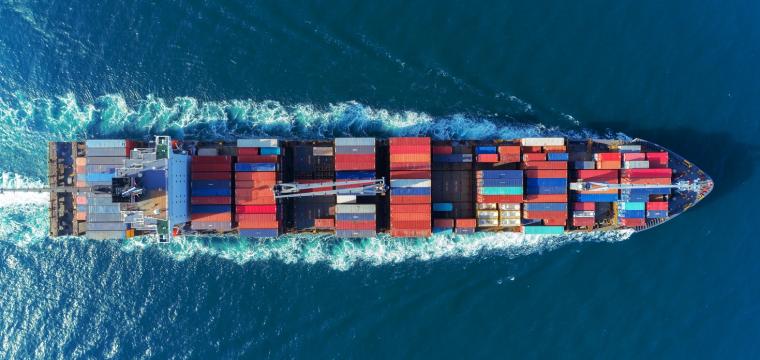Whether driven by business opportunity, stakeholder pressure, or a desire to do the right thing, more and more businesses are striving to become sustainable. This means looking not only at their own operations, but also outside them, at their supply chains.
The supply chain is often responsible for the majority of a company’s social and environmental impact. According to McKinsey, it accounts for more than 80 percent of a typical consumer company’s greenhouse gas emissions, and over 90 percent of its impact on air, land, water, geological resources, and biodiversity.
In this article we cover what sustainable supply chain management exactly is and outline some ways in which you can make your supply chain more sustainable.
What is the difference between green supply chain management and sustainable supply chain management?
Green supply chain management means integrating environmental objectives into the management of a company’s entire supply chain, from sourcing raw materials to final delivery of the product. Sustainable supply chain management, on the other hand, takes not only environmental but also social and economic concerns into account.
What makes a supply chain sustainable?
A sustainable supply chain has three main elements: social, environmental, and economic responsibility. Here’s a quick summary of what these elements mean:
Social responsibility
Social responsibility is about making sure that the people who work within your supply chain - your own employees and those who work for every supplier - are treated in a way that upholds human rights and promotes health and wellbeing. This includes giving employees fair and timely compensation, treating them with respect and dignity, and providing safe working conditions.
Environmental responsibility
Supply chain activities can have negative consequences for the planet, from greenhouse gas emissions to loss of biodiversity and waste production. A sustainable supply chain minimises any harmful impacts by ensuring that environmentally responsible practices are adopted at every stage of the product’s journey.
Economic responsibility
A sustainable supply chain also needs to meet financial obligations – of shareholders, business partners, employees, financial institutions, and more. It therefore requires looking at areas such as financial planning, compliance with financial laws and regulations, risk management, and maintaining profitability.
Sustainable supply chain management
Sustainable supply chain management primarily involves identifying the sustainability risks within your supply chain, setting targets to reduce negative impacts, and collaborating with suppliers to achieve these targets.
Of course, this is easier said than done. Making supply chains sustainable can be challenging, partly because nowadays they’re rarely simple, linear chains - instead, they’re complex and often global networks of interconnected relationships.
To help you get started, we take a look at some of the ways in which you can work towards a more sustainable supply chain below.
4 ways to make your supply chain sustainable
1. Map your supply chain
You probably know your own suppliers well, but what about your suppliers’ suppliers? Mapping your entire supply chain will give you greater visibility, which is critical if you want to know how and where to make sustainability improvements.
Mapping usually involves gathering information from your direct suppliers, including where they’re located and who their suppliers are. Then the next step is to collect the same information from your Tier 2 suppliers, and so on until you reach the source - the raw material suppliers.
The aim is to be able to trace your product from origin to consumer and see how natural and human resources are used at every stage. This should make it much easier to identify and address sustainability risks. For example, you may discover that a supplier is based in a region known for human rights violations or in an area at high risk of deforestation.
2. Leverage technology
Companies may have dozens, hundreds, or even thousands of Tier 1 suppliers, depending on how big they are, which can make gathering information a huge task. Fortunately, there are software platforms and tools available to help.
Some will automatically cascade your mapping requests through the supply chain. So, Tier 1 suppliers will be invited to join the mapping process, then they will pass the invite on to their suppliers, etc., until a full picture of your supply chain emerges.
Other features that platforms can offer include automatically screening suppliers for risk and heatmapping to highlight potential issues.
3. Develop a policy and set goals
Once you’ve identified the risks and opportunities in your supply chain, you can develop a sustainable procurement strategy or revisit your current procurement strategy to incorporate sustainability values. If you’re creating an additional strategy, it’s important to make sure this is aligned with existing organisational strategies and policies, so that sustainability is fully embedded in your thinking and decision making.
Also important is setting SMART (specific, measurable, attainable, relevant, and time-bound) sustainability targets. You can have a strategy, but without clearly defined goals, you won’t be able to measure progress effectively. These could focus on reducing carbon footprint, improving water efficiency, reducing supply chain miles, or partnering with more social enterprises.
4. Communicate with suppliers
Discussion with suppliers is key to a more sustainable supply chain. How you engage with them will depend on factors such as company size and position within the value chain.
A large company may enforce sustainability by disseminating codes of conduct or integrating expectations within contracts. For other companies, a different approach may be more suitable. This might involve communicating the importance of sustainability and sharing your goals, or even supporting suppliers to implement their own sustainability programmes.
Having an open conversation about challenges and working collaboratively to find potential solutions can be the most effective way of improving supplier performance and could lead to new business opportunities.
Whichever approach you take, communicating with your suppliers and conducting regular supplier evaluations will help you to make sure that they are aligned with your own values as you run your business.
Supporting businesses to become more sustainable
At the Development Bank of Wales, we’re committed to addressing the climate change emergency and supporting the Welsh Government’s net-zero strategy.
Our finance can help businesses in Wales invest in becoming more sustainable and support their transition to becoming carbon neutral. We can also provide loans and equity for companies developing and providing innovative green products and services in Wales.
Support and links
We support our customers to improve and reduce their environmental impact by working closely with Business Wales. Their specialist sustainability advisers offer support on grants, renewable energy, environmental sustainability, and the Green Growth Pledge.
Related links


